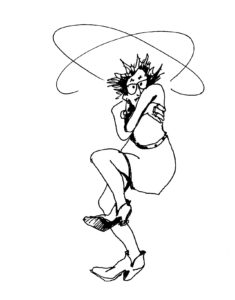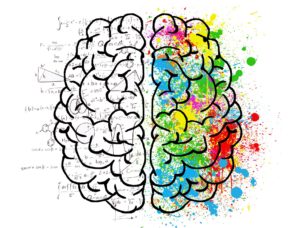
Is it anxiety, worry or stress?
Is it anxiety, worry or stress?
They all tend to fall into a shared basket of maladies in the 21st century. Do you suffer from a triumvirate of all three or does one create major havoc in your life?
If that’s the case …. which one?

The New York Times recently had a great article by Emma Pattee that explains the difference between anxiety, worry and stress. Since one or all affects most of us, I thought it would be great to offer a summary. You can read Pattee’s article here.
What’s WORRY?
Worry is characterized by being obsessive and repetitive. It’s when our minds ruminate and dwell on negative thoughts, uncertainties or things that could possibly go wrong. Melanie Greenberg, a clinical psychologist in Mill Valley, Calif and author of The Stress Proof Brain explains it this way, “worry is the cognitive component of anxiety. That means worry happens only in the mind and not in the body. When we worry it calms the brain down, it’s likely to cause us to problem solve or take action. Worry is a way for the brain to handle problems in order to keep us safe. Its only when we get stuck thinking about a problem that worry stops being functional and start becoming negative.”
If you’ve been in the clutches of worry you know how tightly it can hang on and consume our thoughts.
Dr. Luana Marques an associate professor of psychiatry at Harvard Medical School and President of the Anxiety and Depression Association of America suggests taking these steps to manage worry:
- Give yourself a worry budget and only allow yourself to worry for a specified amount of time (i.e. 20 minutes) when the time is up. Redirect your thoughts.
- When you’re worried push yourself to take action to move the thought out of your mind.
- Write your worries down. Studies show that 8-10 minutes of writing can calm repetitive thoughts.
What’s STRESS?
Stress is a physiological response to an external event like a deadline, doctor’s appointment or exam that exceeds the individual’s resources.
Stress used to be a natural response to a threat like a lion lurking nearby. Today we’re not faced with lions but traffic, work and relationship expectations and financial issues that fire up the limbic system and release adrenaline and cortisol which help activate the brain and body to deal with the threat. Symptoms of stress are a rapid heartbeat, clammy palms and shallow breathing. While it might feel good at first as adrenaline floods the body and gives you a boost to reach a deadline or get to an appointment, it becomes chronic stress if your body stays in this fight-or-flight mode continuously. Chronic stress can lead to many health concerns like digestive issues, increased risk of heart disease and a weakening of the immune system. Try these to manage stress.
- Exercise is a way for your body to recover from the increased production of adrenaline and cortisol.
- Know what you can control and let go of what you can’t.
What’s ANXIETY?
Anxiety is the culmination of both worry and stress. It is both cognitive and physiological. This means we experience anxiety in both mind and body. It takes worry and stress to the next level. Dr. Marques explains it this way, “anxiety in some ways is a response to a false alarm. An example would be you show up at work and someone gives you a look. You start to experience all the physiology of a stress response because you’re telling yourself that the boss is upset with you or that your job might be at risk. The blood is flowing, the adrenaline pumping and your body is in fight-or-flight but there is no predator nearby. The threat is in your mind.”
Dr Marques reminds us that there is a difference between feeling anxiety which can be a normal part of life and having an anxiety disorder. An anxiety disorder is a medical condition that may include stress and/or worry. Suggestions to manage simple anxiety.
- Limit Sugar, caffeine and alcohol
- Wiggle your toes – this kind of refocusing can calm you and break the anxiety loop.
- Distract yourself – go for a run, listen to music, cuddle a pet, or rub a piece of Velcro or velvet.
In SUMMARY
Worry happens in the mind.
Stress happens in the body.
Anxiety happens in both mind and body.
In small doses worry, stress and/or anxiety can be positive forces in our lives. It is when it escalates and stops us from acting in healthy, positive ways that it becomes an issue that needs addressing.
OH MY WORD can be a helpful management tool for worry, stress anxiety.

OH MY WORD is a science backed, 5 minute daily journal that will help you transform negative thoughts, ease anxiety and worry and cultivate joy in your life.
- Replaces negative thoughts with positive ones you choose thus redirecting the worry.
- Positive thoughts flood the body with dopamine and serotonin diluting and effects of adrenaline and cortisol.
- Creates a creative, mindful distraction from anxiety.
OH MY WORD Journal can be purchased here:




